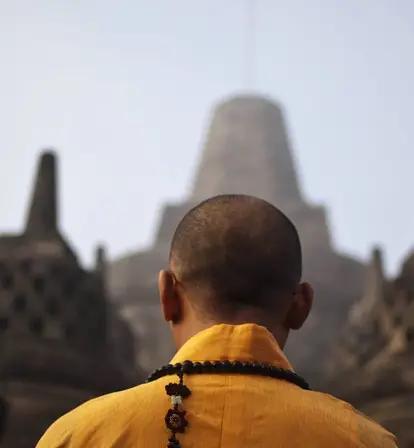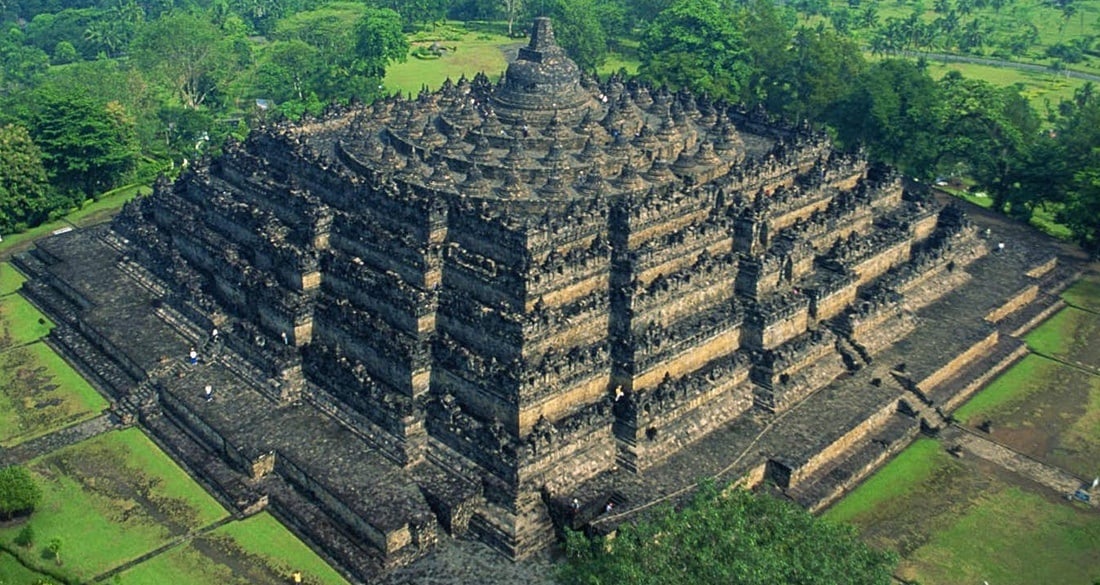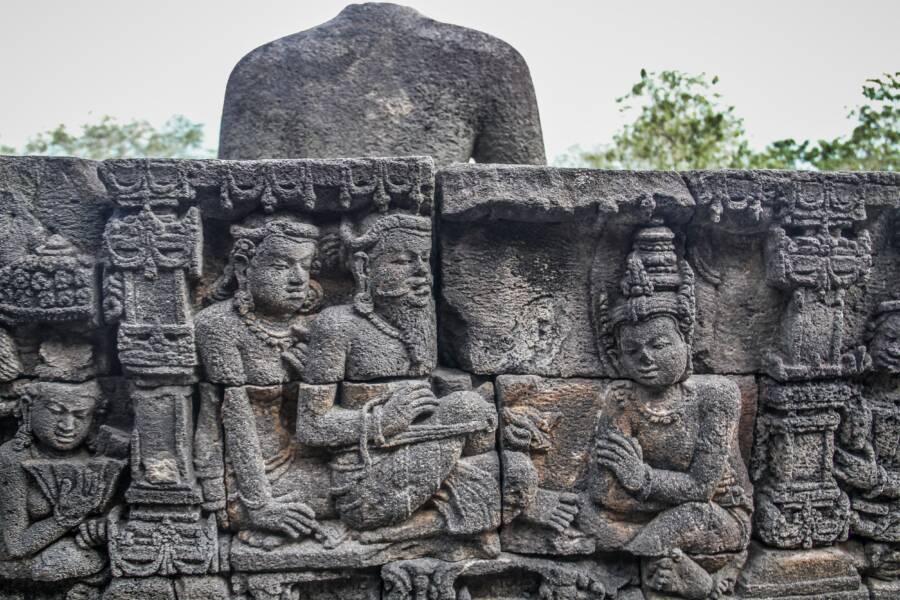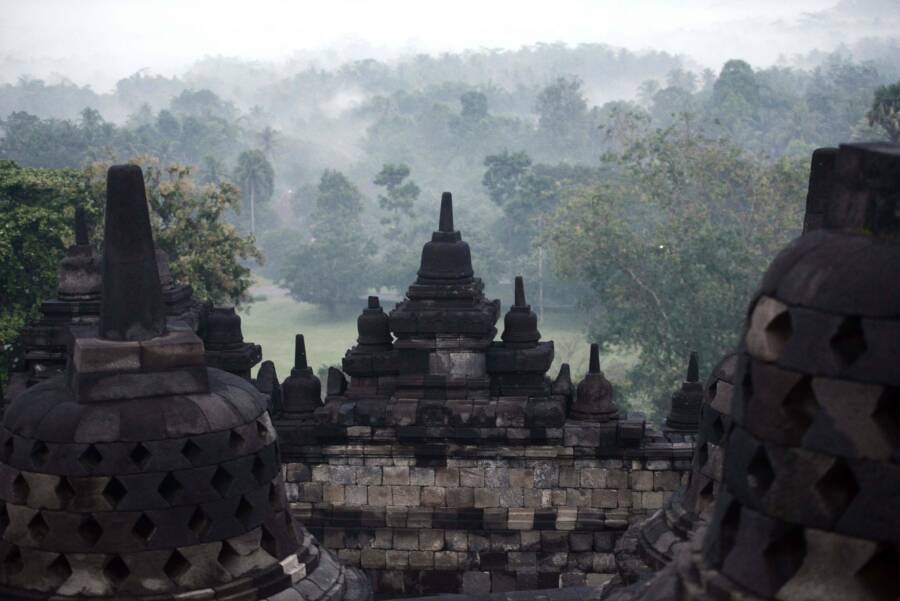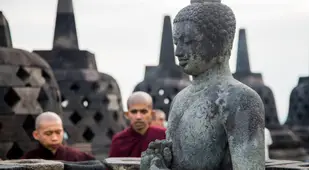Borobudur boasts more than 500 life-sized Buddha statues over a sprawling 27,000 square feet.
Even though it's 1,200 years old, the ancient Buddhist temple Borobudur is a wondrous sight.
The historic stone structure hosts 500 Buddha statues over a whopping 27,125 square feet, making it the largest Buddhist temple in the world.
The Ancient History Of Borobudur Temple
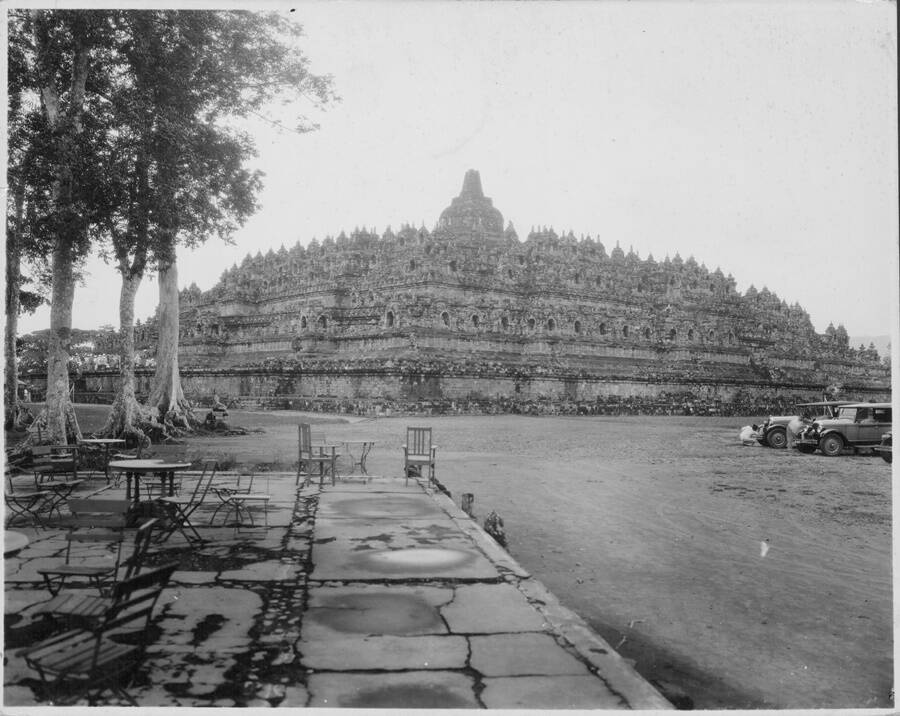
Lionel Green/Archive Photos/Getty ImagesA vintage photograph of Borobudur Temple, circa 1900-1950.
Located 25 miles outside the Indonesian city of Yogyakarta on the island of Java, lies the ancient Temple of Borobudur.
The temple was constructed sometime between the eighth and ninth centuries under the Sailendra Dynasty that ruled over Java at that time, which was a burgeoning epicenter for Buddhist scholarship and religion.
The region was also a mecca of agriculture and because of this, it was believed to be one of the most sacred places on the island. Naturally, construction on Borobudur Temple began there in earnest.
The 95-foot-high temple is made of six terraces and each of these features a stupa, which is a dome-shaped area for solitary meditation. Each stupa contains a life-sized Buddha statue. There were 504 such statues in total. Today, 43 are missing.

Werner Forman/Universal Images Group/Getty ImagesEach stupa at Borobudur houses a figure of the Buddha.
Borobudur's grand design attracted Buddhist pilgrims from all over the world. Visitors from ancient China left coins and crafts which have since been found by archaeologists.
The findings also suggest that waves of pilgrims continued to arrive until the 15th century. Around that time, many Javanese converted to Islam instead and Borobudur was left abandoned. For the next few centuries, the temple was overtaken by encroaching flora, buried in volcanic ash, and subjected to earthquakes.
It wasn't until 1814, when Java was briefly under the control of Great Britain, that the local governor rediscovered the abandoned temple.
Since then, Borobudur has been revitalized as both an important religious and historical site.
An Architectural Wonder
Borobudur Temple isn't only cherished for its size, but also for its intricate design. Made from two million stones carved out of the surrounding volcanic rock, the temple resembles a mandala from above.
It is also a unique cultural blend of Buddhist beliefs and Javanese traditions from Indonesia's earlier kingdoms.
Borobudur temple features multiple levels of intricate stone carvings. The lower levels are adorned with nearly 3,000 bas-relief carvings that depict the life and philosophies of the Buddha. The middle levels boast various stories of the Buddha's life from the Jataka Tales, which is the scripture of Buddha's life cycle.
The central dome is surrounded by 72 Buddha statues individually encased inside a perforated stupa and The highest level of the temple features a lotus-shaped balcony.
In total, about 500 Buddha statues — each individually encased in perforated stupas — adorn the temple, making it the largest collection of Buddha statues in the world. Many of these are damaged, missing, or in other collections around the world.
Among the compound's treasures is a headless statue, known as the Unfinished Buddha, which bears a partially finished head and arm. No one knows for sure where the unfinished statue was meant to be, but one theory suggests that it was meant to fill the central stupa atop Borobudur to cover up a design error.

Oka Hamied/AFP via Getty ImagesBuddhist monks pray on the eve of Buddha's birthday, also known as Vesak.
Archaeologists also hypothesize that the statue may have been abandoned mid-carving due to a design flaw and instead of committing sacrilege by destroying the Buddha, the statue's carver put it inside a completely walled-off stupa to hide its imperfections.
Borobudur Temple Today
After its rediscovery, the ancient temple's exposure to the natural elements caused it to rapidly deteriorate. Other parts of Borobudur and its ornaments were looted by collectors and researchers.
Luckily, ancient sculptors used paint and stucco to cover the temple walls which has greatly helped to preserve Borobudur's stone material over millennia. Nevertheless, it still requires extra care.
But it wasn't until the late 1960s that the Indonesian government began to take serious steps to preserve Borobudur's integrity. These culminated in one of the most ambitious international preservation projects ever attempted under a partnership between the government and the United Nations Educational, Scientific and Cultural Organization (UNESCO).
The "Save Borobudur" campaign was launched in 1968 and the restoration project itself — which lasted a decade starting in 1973 — involved reassembling millions of stones, deep cleaning the temple's relief panels, and installing a modern drainage system to prevent further erosion.
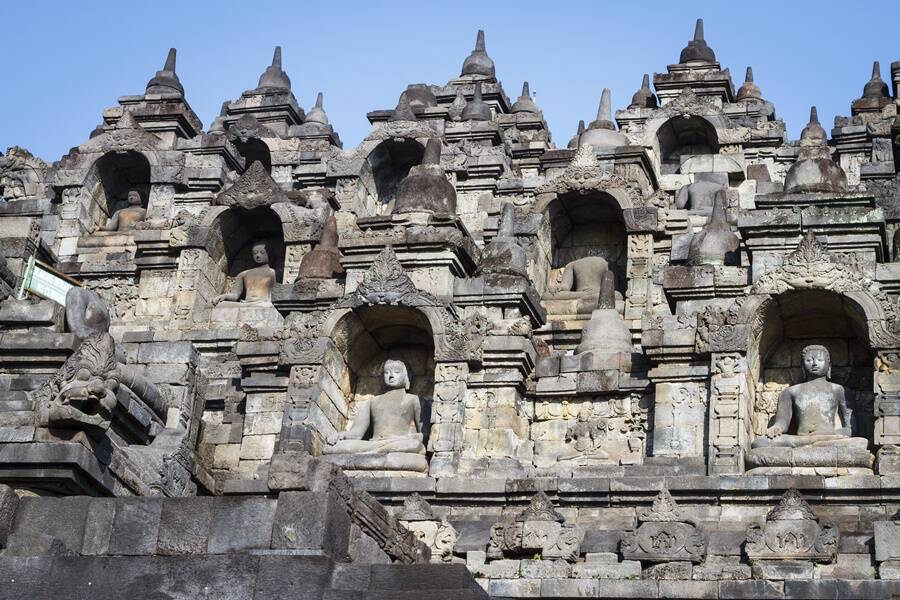
Mikel Bilbao/VW PICS/Universal Images Group via Getty ImagesMost of the Buddha statues have deteriorated due to natural elements and looting.
Conservators even managed to retain enough of the structure's original stone to complete its reconstruction. In 1991, Borobudur was designated as a World Heritage Site by UNESCO.
Today, Borobudur Temple is often used for religious ceremonies by local monks and it is widely recognized as a popular tourist destination. The temple sees around five million visitors a year, including up to 300,000 tourists each day during the holiday season, making it one of the most visited sites in Indonesia.
Now that you've learned about Borobudur, the world's largest Buddhist temple, read up on Gobekli Tepe, the oldest temple in the world built 6,000 years before Stonehenge. Then, learn about India's Kailasa Temple, which was chiseled by hand for more than 20 years.
